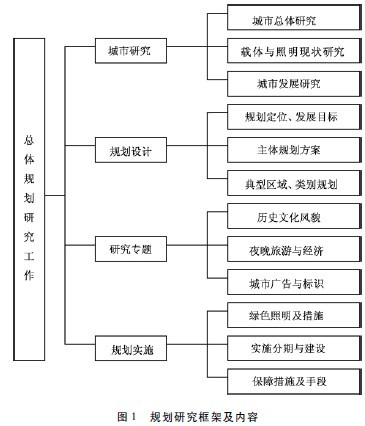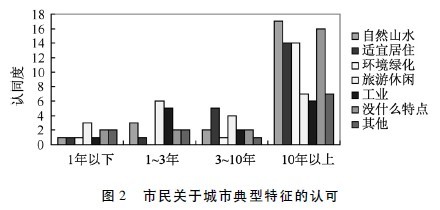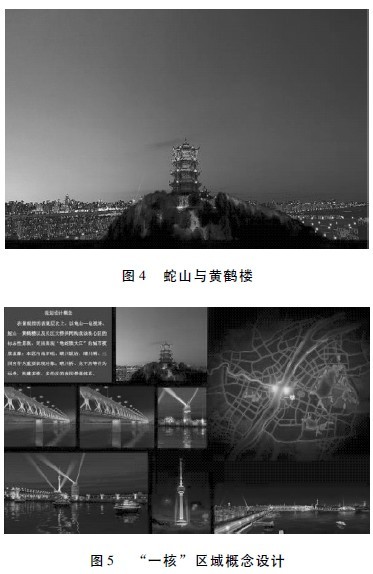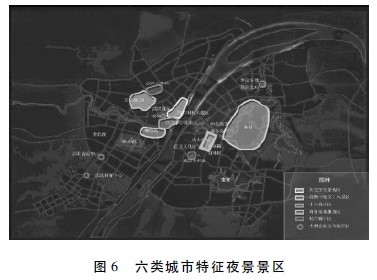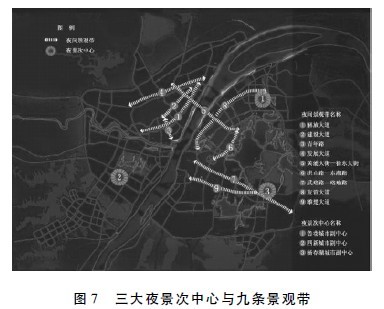1 Planning background and content Wuhan, a central city in central China, has a very advantageous geographical position. The urban area consists of Wuchang, Hankou and Hanyang, which are separated from the Yangtze River and Han River. It has typical landscape features. The city has many historical and cultural relics and is a historical and cultural city in China. In recent years, with the economic development, urban environment and infrastructure construction, the urban spatial pattern of “one city, three towns and three towns†has gradually become prominent. In terms of night scenes, how to fully demonstrate the landscape pattern of “one city, three towns†in urban environment, how to reflect the regional culture of the city's blending between China and the West, how to unify the core nighttime landscape of the three towns that are blocked by natural waterways, and coordinate the construction of night scenes and history and culture. On the basis of the harmonious development, and on this basis, how to achieve a series of problems such as pulling the city night tour and stimulating night economic activities needs to be resolved. In this plan, I have discussed the above issues in detail. 2 Research work framework The planning and design is divided into four aspects: urban research, planning and design, special research, and planning implementation. Urban research mainly studies and refines the urban nightscape construction and the key tasks and objectives of this planning through urban surveys, urban superior planning analysis and relevant local policy requirements, and specifically through planning and design, related research, and how to plan. The measures implemented are specifically implemented. See Figure 1 for details. On the basis of the status quo investigation, this plan will join the questionnaires and conduct statistics on results, better grasp the characteristics of the city and planning, and understand the public's awareness of the characteristics of the urban landscape. This is also a major feature of this plan. Where. 3 Planning the overall task Through the research and analysis of the city's current situation research and related planning results, urban recent night scene construction, questionnaires, etc., the following main tasks are proposed: 1. Solve the problem of creating characteristics of the city. Mainly based on the following two points: (1) In the questionnaire survey, with the increase of the number of years of residence, the public's identity with natural landscape, livable and good environmental landscape characteristics is consistent (see Figure 2). (2) The requirements of the “National Historical and Cultural City†in the Master Plan of Wuhan City (2006-2020). 2. Clarify the structure and key landscape of urban landscape lighting construction. 3. Establish a systematic and perfect urban lighting guidance system. 4. Comply with the city's recent construction and phased implementation. 4 Planning guiding ideology and overall structure 4. 1 Planning guiding ideology Based on the “Wuhan City Master Plan 2006-2020â€, we will coordinate and coordinate the development of landscape lighting and society, economy, culture, urban construction and environment, and form an urban style integrating historical culture and modern civilization. The concept is to build an excellent living environment and improve the layout system of urban landscape lighting. 4. 2 Planning the overall structure The plan analyzes the main landscape features of the city. Through the investigation, induction and refinement of the landscape elements such as the Yangtze River, Han River, mountains, lakes, modern buildings, historical buildings, open spaces and roads, and advertising signs in the urban area, The two rivers, six districts, three hearts and nine belts are the main framework of the nighttime landscape, and the overall nighttime landscape of the city formed by the combination of points, lines and planes formed by several nodes. See Figure 3. 4. 3 Planning key areas 4. 3. 1 One core – the core area of ​​the city night scene The iconic landscapes such as the Yellow Crane Tower, the Yangtze River Bridge and the Guishan Snake Mountain form the core of the urban landscape of Wuhan's “Kizi Snake Locked Riverâ€. This core area includes the Snake Mountain-Yellow River Tower, the Yangtze River Bridge, the Guishan-TV Tower, and the Qingchuan River. The main attractions such as Pavilion, Qingchuan Hotel, Nan'an Mouth and Qingchuan Bridge form a unified whole of various landscape elements such as rivers, mountains, bridges, buildings and towers, and are the areas that best show the characteristics of Wuhan city's regional landscape. See Figure 4 and Figure 5. In the night view of the city, the area is determined to be the core area of ​​the city's night view of Wuhan City. The landscape image will further strengthen the core image of the urban landscape of the turtle turtle locks the river. 4. 3. 2 Two Rivers—Two Rivers (four shores) and coastal night scenes The two rivers and their coastal areas have concentrated on the historical development of the city and the achievements of new construction. This plan determines the Yangtze River and its coast, the Han River and its coastal areas as the focus of nightscape construction. Its landscape elements include the Yangtze River, bridges, river beaches, docks, boats, roads and buildings along the river and the city's outlines within the sights, highlighting urban construction. The intersection of the two rivers happens to be the core of this planning landscape. The Yangtze River Bridge to the second bridge section on both sides of the Yangtze River is the core section; the Yangtze River Bridge to Baishazhou Bridge, the Second Yangtze River Bridge and the Tianxingzhou Bridge are used as development sections. 4. 3. 3 Six districts - six types of urban features night scenic spots According to the survey of urban status and the survey of urban characteristics, this plan determines six historical characteristics of historical and cultural areas, natural (geographic) scenic spots, central commercial districts, business financial service zones, urban window zones, and cultural and sports venues. Figure 6 shows). Historical and Cultural Area: Shouyi Cultural District, Hankou Old City Scenic Area; Nature (Essay) Scenic Area: East Lake, Guishan-Yuehu; Central Business District: Hankou Central Business District; Business, Finance, Service Area: Construction Avenue and Wangjiadun Central Business District, Zhongnan Road-Zhongbei Road Business Office District; City window area: Hankou Railway Station—Wuhan Bus Passenger Transport Terminal, Wuchang Railway Station—Hongji Bus Passenger Transport Station, Wuhan Passenger Transport Port, Hanyang Passenger Transport Center, and Xinwu North Station of Passenger Dedicated Line; Large-scale convention and exhibition venues: Wuhan International Convention and Exhibition Center, Wuhan Sports Center and its surrounding areas. 4. 3. 4 Three Cities Night Scenery Center In order to enhance the overall nighttime image of Wuhan City and combine the future development of the city, three urban night sub-centers will be set up in the urban areas outside the core scenic spots. They are: Luxiang City Sub-center, Sixin City Sub-center, and Yangchun Lake City Sub-center. The urban construction of the three major night sub-centers is currently in its infancy or pending phase. Therefore, the landscape lighting construction should be synchronized with and coordinated with the urban construction in these areas. It must meet the requirements of energy conservation and environmental protection, and at the same time drive the development of landscape lighting in the surrounding areas to form a bright and dark, suitable color and beautiful landscape lighting. . 4. 3. 5 nine urban landscape belts Most urban roads in Wuhan rely on the Yangtze River to form a vertical and horizontal pattern perpendicular to the river and parallel to the river, and connect many landscape nodes and landscape areas, which is an important structure of the city's night landscape. This plan proposes the formation of nine urban nighttime landscape belts, including Jiefang Avenue, Jianshe Avenue, Qingnian Road, Development Avenue, Huangpu Street—Xudong Street, Hongshan Road—Donghu Road, Wulu Road—çžç‘œè·¯, Youyi Avenue, Xiongchu Avenue. Wait. See Figure 7. 5 Thematic planning study The special planning research is closely related to the historical and cultural characteristics of the city, the promotion of urban tourism, and the improvement of urban nighttime logos. 5. 1 Historical and Cultural Area This landscape lighting plan takes important cultural relics and historical sites as its points; takes each historical section as a line; takes the urban landscape as a surface, and achieves the organic combination of points, lines and surfaces to form a clear protection layer with deep three-dimensional protection. The landscape pattern of the night landscape. Through different grades of various styles and protected buildings in the urban area, the protection principles and protection measures are respectively formulated, and the corresponding design guidance suggestions and suggestions are given. See Figure 8. 5. 2 Tourism landscape lighting planning Tourism landscape lighting planning is to plan the viewing points and scenic tours of the evening city. Organizing night-time activities can not only stimulate domestic consumption, but also prolong the stay time of tourists in Wuhan and drive the economic development of related industries. This plan selects the different night-time theme of the city by reflecting the different carrier types of Wuhan characteristics, and organizes the corresponding theme theme night tour activities. Such as: Jianghan water town tour, companion culture tour, trade pier cultural tour, Han River scenery tour, religious culture tour, special festival tour. 6 Planning implementation and protection Urban landscape lighting integrates urban construction, lighting technology and art, urban environment, and urban management. In the planning, we also focused on the annual implementation plan, lighting energy conservation and light pollution prevention, environmental lighting ecology and other issues, and discussed lighting implementation and management measures. 7 Conclusion As a central hub of China and an important city on the Yangtze River, Wuhan has always been known for its important historical culture and distinctive riverside urban characteristics. This plan has positively promoted the urban characteristics of Wuhan, established a beautiful and suitable night environment for human settlements, enriched its night tourism resources, and improved the environmental quality of the city. It also enriched the research content of the urban landscape lighting planning system. The same city lighting plan provides a model and reference. Our 240W quantum board grow light is consist of 2pcs 120W quantum board grow light. Grow Light Quantum 240W, quantum board 240W Shenzhen Zhenyang Century Technology Ltd. , https://www.growlightzy.com